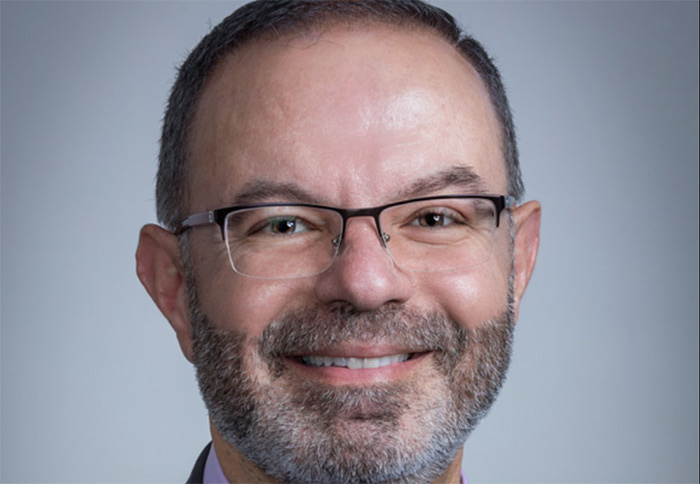Claremont parents, educators prepare for the Common Core
The Scantron is rapidly becoming a thing of the past. That was one of the messages delivered at a meeting on the Common Core held at Claremont High School on Friday, January 31.
A few dozen parents and community members—including school board members Hilary LaConte, Dave Nemer and Nancy Treser Osgood—braved the rain, filing into the Don F. Fruechte Performing Arts Center for the evening gathering. Claremont Unified School District administrators took turns covering various aspects of the new standards that are transforming education in California and across the country.
CHS Principal Brett O’Connor was first to speak. He discussed why so many educational advocates have thrown their support behind the most sweeping school reform in decades.
One of the aims of the initiative is to foster greater educational consistency, Mr. O’Connor noted.
In the past, the 50 different US states have had 50 different educational standards. As a result, a student moving from one state to another have been likely to encounter vey different expectations at their new school. With 45 states having adopted the Common Core, there will be much more uniformity in the nation’s schools.
The Common Core is also intended to foster greater rigor among US schools whose students, according to Mr. O’Connor, “underperform when compared to their peers in other developed countries.”
It is generally expected that students will emerge from high school ready for higher education or the workplace. A discouraging statistic shows that US schools are falling down in this mission. Some 60 percent of US students who go onto college must take remedial classes, which is expensive and delays graduation, according to Mr. O’Connor.
The Common Core, he said, is trying “to boost up expectations more in line with other industrialized nations, whose students are doing quite well.”
Several other administrators also took to the podium, including El Roble principal Scott Martinez, San Antonio principal Sean Delgado, assistant CHS principal June Hilton and CHS’s two new assistant principals of student services, Clara Dehmer and Doug McCasey.
A new educational frontier
The Common Core truly represents a sea change in the way children are taught.
The new standards stress 21st century learning skills such as communication, critical thinking, collaboration and creativity, according to Mr. Martinez.
With the advent of online assessments, technology skills will need to be woven into the curriculum in every grade. The plan is to create “digital natives,” for whom technology is second nature.
It is a development that Mr. Delgado finds exciting.
“Think of how technology has been integrated into your life,” he said. “I feel more productive because of technology in my life. The Common Core reflects the role of technology in our lives.”
The emphasis on technology may be indicative of the information age but the new standards will cover less information, according to Ms. Hilton, who expounded on changes in the math curriculum. The emphasis will be on depth rather than quantity, she said.
As a former math and science teacher, Ms. Hilton recalls having to throw a wide array of concepts at students, with little repetition of subject matter. If a student failed to grasp a topic, they had to play a game of catch-up.
Under the new standards, the administrator shared, concepts will be introduced at an earlier grade and reintroduced over the years, creating “a strong foundation that’s not going to crumble.”
The creators of the Common Core expect students to justify their answers in math as well as in English, she noted.
“It’s not so much what’s the right answer,” Ms. Hilton said. “Students will be expected to understand why it’s the right answer. Yes, 9 times 5 is 45. We know it’s right, but why?”
Math teachers in the district have met and have agreed that an integrative approach is the best way to implement the Common Core, according to Ms. Hilton. Geometry and algebra concepts, for instance, may be taught simultaneously. Teachers will also be emphasizing the real-world application of math, allowing them to answer the perennial student question: “When am I ever going to use this?”
In the area of English, an integrative approach will be encouraged by the fact that students will be reading less fiction and more nonfiction, allowing for the incorporation of topics like history and science.
By the time kids get to high school, the ratio under the new standards will be 70 percent nonfiction to 30 percent fiction, according to Mr. Martinez. When he and his audience went to school, he pointed out, the focus was on fiction: “We read Julius Caesar and To Kill a Mockingbird.”
But analyzing fiction is not what people are asked to do when they go to college, where students are regularly assigned research papers, he said. And it doesn’t prepare students for the workplace, where they will be asked to decipher technical manuals.
A hot topic
The Common Core has generated some controversy, with critics asserting that the new standards represent an unhealthy intrusion into American classrooms on the part of the federal government.
While adoption of the new standards is voluntary, opponents consider the billions of dollars in federal grants and waivers available to states that adopt the Common Core a form of coercion.
The Common Core have also sparked additional concerns, including complaints that the standards do not incorporate enough teacher input, are not supported by research and are too expensive to implement.
Parents—who after the meeting had the chance to log onto computers to try a sample of the online assessment—emerged with some concerns as well.
Prashant Ukude, whose daughter is a freshman at CHS, said the Common Core is “a good thing.” Whether the new standards succeed, however, depend on how well teachers implement them.
With tests and homework demanding answers that are more elaborate and subjective, Mr. Ukude worries that instructors will find themselves strapped for time.
“Currently, teachers take 30 seconds to grade a Scantron,” he said. “Now, the testing process will take longer. They will need more help.”
Such misgivings notwithstanding, attendees at the meeting were largely focused on the nature of the new standards as opposed to their drawbacks or merits.
Julia Bishop, an avid reader, has some qualms about the shift away from fiction reading.
“To Kill a Mockingbird is a must,” she said. “Every child should read it.”
Nonetheless, she is keeping an open mind about the Common Core because it will directly affect her son, a freshman at CHS.
“I know there’s controversy around it,” Ms. Bishop said. “I haven’t come to a conclusion yet. I need to delve into it.”
Change at hand
Now is certainly the time to learn more about the Common Core, because the new standards are upon us.
Pilot testing for the Common Core in the areas of English and Math will be conducted next spring. While these practice test scores won’t be counted or even reported, they will be used to fine-tune the assessment process. Students will take real assessments the following year.
With this timeline in mind, CUSD is currently engaged in staff development, with teachers being trained in the Common Core. Some local education leaders are working to develop new course descriptions and units. Meanwhile, the district’s technology team is purchasing equipment such as iPads and working to expand the infrastructure in Claremont schools.
A final meeting on the Common Core, covering the same information, will be held at at Sumner Elementary School on Thursday, February 20 at 6 p.m.
—Sarah Torribio
storribio@claremont-courier.com








0 Comments